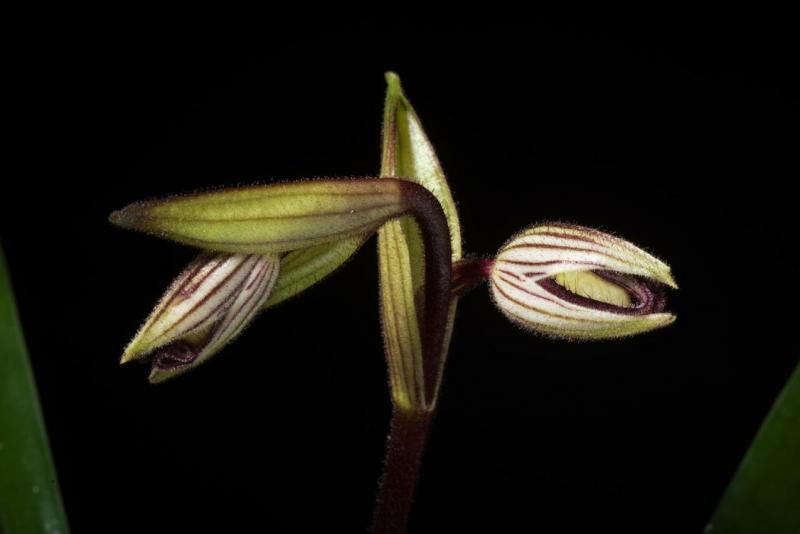Paphiopedilum roebelenii
General Information
Paphiopedilum roebelenii is a warm to hot growing orchid belonging to the sub family Cypripedioideae.
Plant Description
Each new growth has numerous leathery arching leaves that grow to 2-50cm long. The plant forms clusters over time
Substrate(s)
- Coarse
Climate
Grows at low elevations. Rainfall ranges from 13mm to 432mm per day, heaviest in July and lightest in February. Humidity ranges from 68% to 87%, highest in September and lowest in April. Temperature ranges from 19C to 33C, highest in April (23C to 33C) and lowest in January (19C to 29C).
Watering
These orchids are sensitive to excessive watering and should only be watered when they look thirsty. Water infrequently and ensure that the roots are dry before watering. Keep an eye on them especially during hot weather as overwatering can lead to rot, whereas underwatering may result in wilting or shriveling, which while unattractive, will not kill the plant.
Fertiliser
These orchids do not need to be regularly fertilised and roots may be sensitive to salt build-up, dying back and therefore impairing the plants growth or even killing it.
If fertilising, use half to quarter of the recommended amount of fertiliser. If they receive fertiliser as part of a collection, be sure to flush out the pots regularly with fresh water and monitor the roots by checking how much resistance is given by the plant when nudged in its pot or mount. If the plant becomes wobbly or loose, repot in fresh mix or rinse the media/mount thoroughly and do not fertilise for at least 3 months.
Be sure to flush out excess fertiliser by running water through the media regularly year round. Use a high Nitrogen fertiliser year round. Use a high Phosphorous fertiliser during Summer and Winter.Potting
Repotting is best done annually.





















